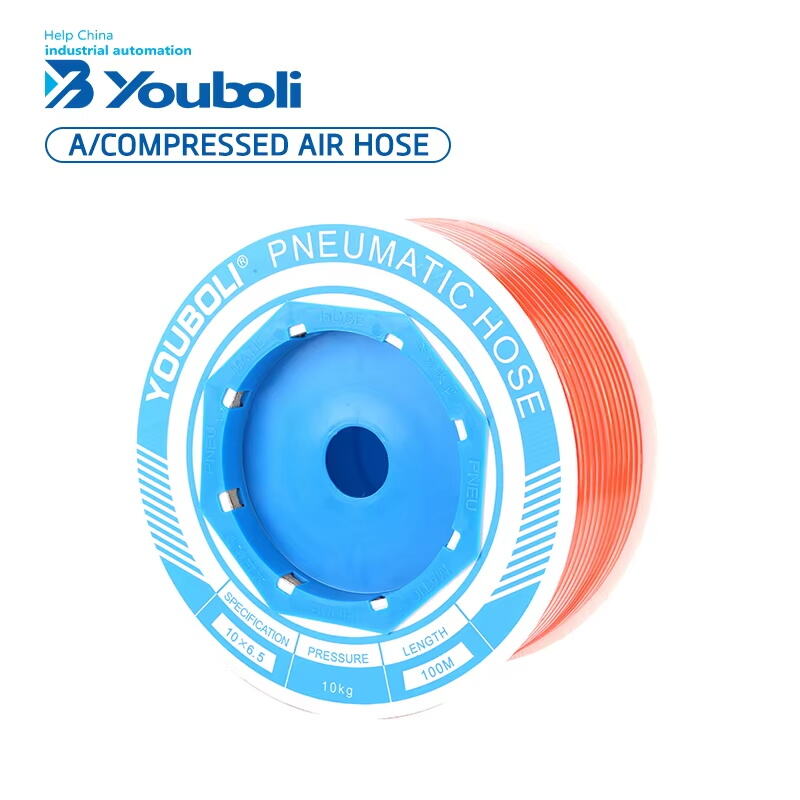Introduction to Air Fittings and Their Importance
Air fittings are vital components in both pneumatic and hydraulic systems, serving as connectors that facilitate the smooth and efficient operation of tools and machinery. In pneumatic systems, air fittings enable the flow of compressed air, allowing tools such as air compressors and spray guns to function effectively. In hydraulic systems, they ensure the seamless flow of fluid, maintaining pressure and system integrity to prevent leaks and enhance equipment reliability. The specific role of air fittings in ensuring the longevity and efficiency of systems cannot be understated, as they directly impact performance metrics and operational efficiency.
Role in Pneumatic and Hydraulic Systems
1. Connecting Components: Air fittings are crucial for connecting hoses, tubes, and pipes within pneumatic and hydraulic systems. This allows for a controlled flow of air or fluid, which is essential for the proper operation of machinery and tools.
2. Maintaining Pressure and Integrity: They play a key role in maintaining the pressure and integrity of the systems. Poorly fitted connections can lead to performance issues and cause inefficiencies within the operational framework.
3. Preventing Leaks: In hydraulic systems, air fittings are paramount in preventing leaks. This not only enhances the reliability of the system but also ensures the equipment’s longevity, which is vital for operational efficiency and cost-effectiveness.
Air fittings come in various designs and materials, each tailored to specific industrial applications. By choosing the appropriate fittings, businesses can optimize their machinery's performance while safeguarding against common operational pitfalls.
Impact on System Efficiency and Safety
Properly selected air fittings are critical for enhancing system efficiency by minimizing pressure drops and energy losses. Selecting the right fittings can lead to significant economic benefits, as reduced energy consumption results in lower operational costs.
1. Enhancing System Efficiency: High-quality air fittings ensure minimal energy loss by preventing leaks and maintaining consistent pressure levels. This plays a crucial role in achieving efficient and cost-effective operations.
2. Safety Assurance: Air fittings are instrumental in ensuring workplace safety by preventing accidental disconnections and leaks. This significantly reduces the risk of hazards and contributes to a safer working environment.
3. Regulatory Compliance: According to the Occupational Safety and Health Administration (OSHA), improper fitting choices substantially increase accident risks. This emphasizes the importance of selecting the right fittings for operational safety and compliance.
By investing in well-designed air fittings, companies not only safeguard their employees but also optimize their equipment’s performance, thereby aligning with both economical and safety standards.
Key Types of Air Fittings
Push-to-Connect Fittings: Tool-Free Installation
Push-to-connect fittings are designed for effortless installation, eliminating the need for tools and significantly speeding up the setup processes in various applications. These fittings feature a mechanism that ensures a reliable seal, reducing the risk of leaks—a crucial factor in pneumatic applications. Many assembly lines and manufacturing processes favor push-to-connect fittings for their efficiency and ease of use, making them a popular choice in settings where rapid installation is required.
Compression Fittings: Secure Seals with Compression Rings
Compression fittings are renowned for creating a strong, leak-proof seal through the use of compression rings. This design makes them versatile for various fluid and gas connections and particularly useful in areas subject to vibrations, where other fitting types may loosen over time. Industries such as automotive and plumbing rely heavily on compression fittings due to their durability and reliability, making them invaluable in settings demanding long-term secure connections and resistance to environmental stresses.
Barbed Fittings: Hose Clamps for Tight Connections
Barbed fittings feature a serrated design that allows hoses to grip tightly, greatly minimizing the chance of disconnection during use. These fittings require hose clamps for added security, making them ideal for applications where flexibility and reliability are paramount. Their prevalence in agricultural and irrigation systems highlights their importance, especially where maintaining water pressure is crucial. By ensuring tight connections, barbed fittings play a significant role in these high-demand environments.
Threaded Fittings: NPT, BSPP, and BSPT Standards
Threaded fittings conform to industry standards such as NPT, BSPP, and BSPT, providing compatibility across various systems. These fittings deliver a robust connection capable of withstanding high pressures, making them suitable for demanding industrial applications. Choosing the correct thread type is critical for performance and preventing leaks, particularly in hydraulic applications, where precision and reliability in fittings are essential to system functionality.
Quick-Disconnect Fittings: Rapid Connection Solutions
Quick-disconnect fittings are engineered to offer rapid connection and disconnection of hoses or pipes without needing any tools, thereby facilitating easy maintenance. These fittings are ideal for situations where frequent swapping or servicing is necessary, helping minimize downtime in fluid systems. Additionally, their design includes safety mechanisms to prevent accidental disconnection, thereby enhancing operational safety and efficiency in environments requiring frequent adjustments or changes.
Applications of Air Fittings Across Industries
Automotive and Manufacturing Uses
Air fittings play a crucial role in enhancing the efficiency of the automotive industry, particularly within pneumatic tools, assembly lines, and paint sprayers. The quick and reliable connections provided by air fittings streamline operations, reducing downtime and labor costs. In manufacturing settings, air fittings are essential for robotic arms and conveyors, supporting high-volume production while ensuring equipment durability and maintaining production rates. Furthermore, the adaptability of air fittings facilitates integration into various automated systems, significantly boosting performance across multiple industrial segments.
HVAC Systems and Pneumatic Tools
In HVAC systems, air fittings are indispensable for connecting ducts and ensuring optimal airflow. High-quality fittings enhance system effectiveness and are crucial for maintaining consistent environmental control. Furthermore, pneumatic tools require secure and efficient fittings to maximize their potential; poor connections can lead to air leaks, resulting in decreased performance and higher operational costs. Regular maintenance and inspection of air fittings in HVAC systems can extend the lifespan of the equipment and improve overall system efficiency, leading to long-term cost savings.
Hydraulic Machinery and Industrial Equipment
Air fittings are vital in hydraulic machinery, where they help stabilize and control fluid transfer under high pressure. This function is critical for maintaining machine performance and preventing leaks or failures. Industrial equipment often demands specialized fittings to accommodate specific media and temperature requirements safely. According to industry studies, selecting the appropriate fittings can significantly reduce failure rates in hydraulic systems, enhancing operational efficiency and safety. Proper fitting selection is vital for sustaining robust performance in industrial settings, ensuring long-term reliability and productivity.
How to Choose the Right Air Fittings
Pressure and Temperature Requirements
Understanding the pressure and temperature ratings is crucial when choosing air fittings to ensure they match the application’s demands for safe and efficient operation. Selecting fittings compatible with your system's pressure ranges and temperatures can prevent failures and accidents. Adhering to guidelines, such as those outlined by the American Society of Mechanical Engineers (ASME), helps ensure that the chosen fittings meet necessary safety standards for pressure and temperature ratings.
Material Compatibility and Corrosion Resistance
Choosing the right materials for air fittings is critical, especially in industries involving aggressive environments like chemical processing. Material compatibility ensures that fittings can withstand environmental conditions and the media they encounter, thereby guaranteeing reliability and durability. Experts often recommend using materials like stainless steel or brass for air fittings in corrosive applications due to their superior resistance to corrosion. This selection directly impacts the system's longevity and operational efficiency.
Ease of Installation and Maintenance
Ease of installation is an important factor when selecting air fittings, as it can significantly reduce setup time and labor costs. Opting for fittings that are simple to install and maintain ensures long-term functionality. Designs that facilitate easy maintenance and inspection are particularly advantageous. Industry best practices often recommend modular fittings, which do not only simplify installation but also make replacements more manageable, supporting continued performance without unnecessary downtime.
FAQ
What are the main applications of air fittings?
Air fittings are primarily used in automotive, manufacturing, HVAC, and hydraulic machinery. They facilitate efficient and reliable connections in these systems, enhancing system performance and safety.
How do I choose the right air fitting for my system?
When selecting air fittings, consider pressure and temperature requirements, material compatibility and corrosion resistance, as well as ease of installation and maintenance.
Why are high-quality air fittings essential?
High-quality air fittings prevent leaks, ensure consistent pressure levels, contribute to energy efficiency, and ensure workplace safety by preventing accidental disconnections.

